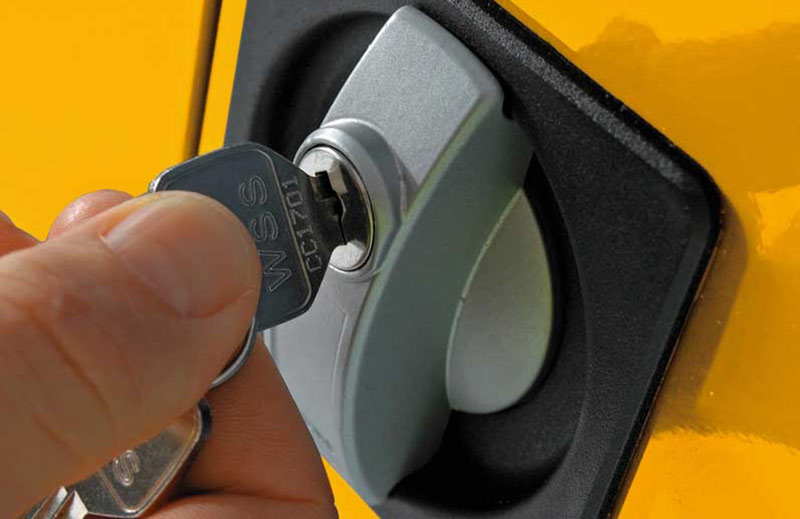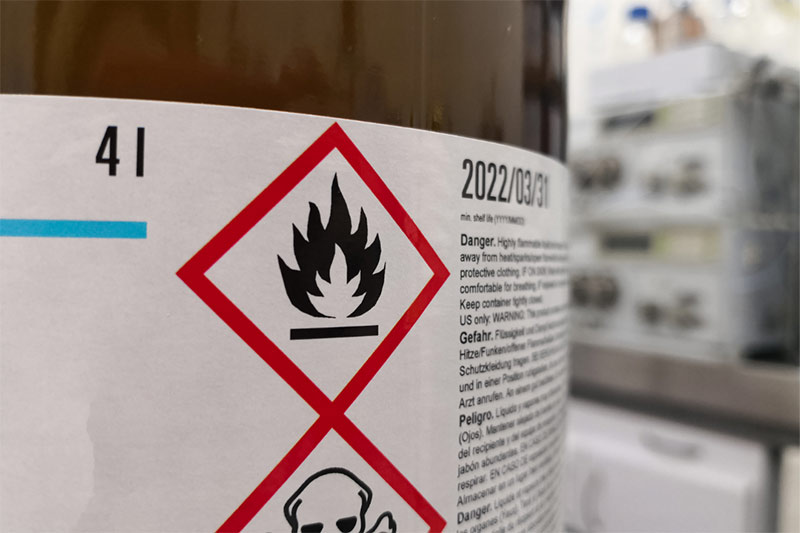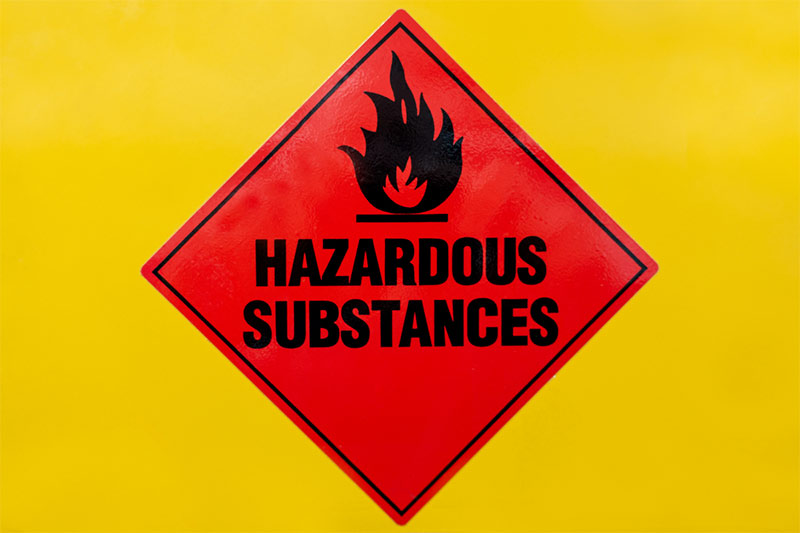Which Cupboard for Which Purpose? COSHH Cupboards
We could say that every UK business or organisation should have a COSHH cupboard. That's because every business or organisation will have at least one or two hazardous substances; just think of the cleaning products you use.
Any type of hazardous product, i.e. a danger to the health and safety of people in the workplace, should be kept in COSHH cupboards. The company should have specific policies and procedures that prevent exposure to these hazardous products. Indeed, it is a legal requirement.
But knowing what type of COSHH cupboard is needed for which hazardous product can be challenging. So, we've set out below which colour cupboard should be used for which products.

What is COSHH and what are COSHH substances?
COSHH means Control of Substances Hazardous to Health and refers to the legal measures implemented to make sure people in the workplace are safe from hazardous products. It is the employer's duty to ensure that no harm comes to employees as a result of exposure to substances that are a danger to their health. This means:
- Finding out what products are hazardous to health
- Conducting a risk assessment to determine how harmful they are
- Implementing control measures to reduce and prevent harm to anyone and ensuring the measures are followed
- Ensuring the control measures are regularly reviewed, up-to-date and effective
- Providing information about the relevant hazardous products and providing instruction and training for everyone in the workplace, including any contractors, suppliers or visitors
- Ensuring there is a comprehensive emergency plan should an accident happen
Some substances are known by many people as being hazardous, but with others, it is not so obvious. The types of substances considered hazardous to someone’s health include:
- Chemicals and products containing chemicals
- Fumes
- Mists and vapours
- Dust
- Gases and asphyxiating gases
- Biological agents (germs), particularly those that cause diseases, such as Legionnaires or Leptospirosis, and germs used in laboratories
There are some substances that, whilst being hazardous to health, are not covered under COSHH. These are asbestos, lead and radioactive substances. This is because these hazardous substances are governed by their own regulations.
Any hazardous to health product should have a COSHH safety data sheet that provides information on the hazardous product, what the harmful ingredients are, how to store and handle the product, and actions to take in emergencies. Any company handling a COSHH product should have a copy of the relevant data sheet as part of their control measures policies.
However, the data sheet must not be confused with a risk assessment. The risk assessment analyses how the company stores, manages and handles hazardous products.

What are COSHH cupboards?
A company's responsibility is to ensure that any hazardous products used in the workplace must have control measures in place to reduce and prevent harm to anyone. As well as having measures for handling and disposing of harmful substances. The way they are stored is also of vital importance.
They must be stored in a way that reduces and prevents the risk of exposure, such as keeping them in designated storage areas and COSHH cupboards. Not all COSHH products need to be stored in cupboards, as long as they are in appropriate safety containers, in a place with a clear exit, are close to washing facilities and away from process areas.
COSHH cupboards are colour coded and synchronised with certain hazardous products. They must be leak-proof, reinforced, secure and designed specifically for storing various hazardous products. The most used COSHH cabinets are:
- Yellow - this is a general COSHH cupboard and is usually used to store general hazardous products, like bleach
- White - this type of COSHH cupboard is designed to store acids and alkalis, i.e. products that are corrosive and dangerous. However, you must not store acids in the same COSHH cupboard as alkalis, which means you will need two cupboards if you have both types of hazardous products
- Grey - this colour indicates the storage of harmful or irritant substances that may cause skin, lung and eye irritation. They are also used to store narcotics or substances that threaten the ozone layer
- Red - these COSHH cupboards are designed for hazardous products that are highly flammable. They have been designed to catch spills from flammable liquids, gases, aerosols and solids
- Blue - this colour COSHH cupboard is designed to store liquid gases and flammable liquids, and includes a built-in sump for spillage
- Vented and Red - these COSHH cupboards are designed to hold hazardous products used in agriculture and horticulture, such as agrochemicals and pesticides. They are designed with vents so that any gases can escape. They are also coated with Germ Guard Active Technology paint for extra protection
- Fire resistant - these are designed for hazardous products that are flammable or could explode in certain conditions. They have a high melting point and will stop the spread of a fire
COSHH storage areas must have extra security measures installed, including:
- Locks with designated key holders
- Metal or welded mesh fencing
- Security alarms and patrols
- Lockable covers

Identifying hazardous products
Hazardous products usually carry a hazard symbol on their labelling, which tells you the level of toxicity and how harmful they can be to health. The most used hazard symbols are:
- Skull and crossbones - this symbol indicates a toxic substance and dangerous to health. If there is a T in the top left corner, it denotes that the product has very potent toxicity
- Human silhouette with a white star in the centre - this symbol means that the product has a potential risk to personal health and may cause severe, as well as long-term, health problems, i.e. respiratory diseases, cancer and even genetic defects
- Dead trees and fish - this hazard symbol means that the product is dangerous to the environment, either delayed or immediate. Any products with this symbol must be disposed of in the right way as hazardous products.
- A flame - means the product is flammable and should be stored away from anything that could cause a spark, which would ignite the hazardous product
- Exploding bomb - this indicates the product could explode and must be handled with extreme care, away from any heat source. Examples include ammunition and fireworks.
- Gas cylinder - gas-based products are hazardous in that, if near heat, they could explode. Heat sources include direct sunlight.
- Exclamation mark - this symbol, which used to be a cross, means that the container contains a hazardous product and may be of danger to health
If you think your company is using products that are harmful to the health of people in your workplace, carry out a risk assessment. Our handy COSHH Safety wall poster chart will help you. It's important to ensure these products are stored correctly in the right COSHH cupboards. However, do not store different levels of hazardous products together; they must be stored in their appropriate cupboard.
ESE Direct is a leading supplier of products for businesses, schools, colleges and universities, workshops and warehouses. With a wide and diverse range of products, more than 40 years of knowledge and experience in the industry, a bespoke design and installation service and exceptional customer service, you can trust ESE Direct.

Author Bio - Debs
Digital marketer, social media, content writer, musician, sloth-lover, tea-drinker.





